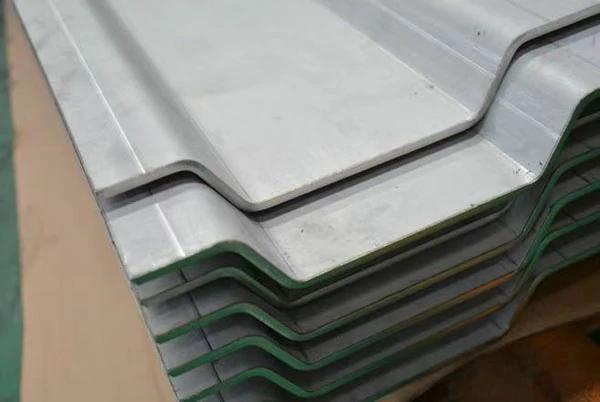
Recently, Openex machining center has processed a batch of high-temperature sagger parts. This batch of products will be used for high-temperature refining project, The material is 304 hot-rolled stainless steel with thickness ranging from 5 to 10mm, weighing more than 150 tons, and the machining process involves de-coiling, cutting, bending, welding and other processes.
Solutions

For the corrugated steel plate to be used in the production of the sagger box, Openex production technology team uses the TongFast 320T precision bending machine to meet the design requirements. The skilled deformation control process ensures the excellent flatness of the steel plate. In the corrugated plate welding process, Openex adopts argon arc welding and carbon dioxide gas-shielded welding to weld both sides of the corrugated plate. The special treatment of the weld seam also greatly ensures the strength of the weld. In the end, Openex succeeded in gaining the customer’s approval through its well-equipped Openex has succeeded in gaining the customer’s approval through its well-established equipment and mature technology.
High Temperature Sagger
A high-temperature sagger is a specialized container or crucible used in various industrial processes involving high temperatures, Saggers are designed to withstand extreme temperatures and provide a protective environment for the materials being processed.
Role and Application of high-temperature saggers
Role of High-Temperature Saggers:
- Container and Support:High-temperature saggers act as containers or crucibles to hold and support materials during high-temperature processes, such as firing, sintering, and heat treatment. They provide a protective environment for the materials, preventing deformation and maintaining their shape and integrity.
- Thermal Insulation:Saggers help in creating a controlled thermal environment by providing insulation between the materials being processed and the surrounding heating equipment. They minimize heat loss, promote uniform heating, and prevent thermal shock to the materials.
- Contamination Prevention:High-temperature saggers help prevent contamination of the materials by creating a barrier between the materials and the furnace or kiln. They protect against reactions with furnace atmospheres, gases, or other impurities, ensuring the purity and quality of the processed materials.
- Thermal Expansion Compensation:During high-temperature processes, materials can undergo thermal expansion and contraction. Saggers, with their thermal stability and mechanical strength, accommodate these dimensional changes and prevent damage or distortion of the materials being processed.
Applications of High-Temperature Saggers:
- Ceramic Industry: High-temperature saggers are widely used in ceramic manufacturing processes, including the production of tiles, sanitaryware, refractories, and advanced ceramics. They hold ceramic components during firing or sintering, maintaining their shape and preventing deformation.
- Metal Heat Treatment: High-temperature saggers find application in heat treatment processes for metals, such as annealing, hardening, and tempering. They provide a stable environment for metal parts, protecting them from oxidation, and distortion, and ensuring controlled heat transfer.
- Powder Metallurgy: Saggers are employed in powder metallurgy processes, where metal powders are compacted and sintered to form solid components. They support the powder compacts during sintering, allowing them to retain their shape and achieve the desired density.
- Glass Manufacturing: Saggers play a role in glass production processes, including glass melting, annealing, and tempering. They hold glass products during heating and cooling cycles, preventing deformation and ensuring uniform thermal treatment.
- Semiconductor Industry: High-temperature saggers are used in semiconductor manufacturing for processes like diffusion, oxidation, and annealing. They provide a stable platform for holding silicon wafers and other semiconductor materials during high-temperature treatments.
- Refractory Production: High-temperature saggers are utilized in the production of refractory materials, which are used to line furnaces, kilns, and other high-temperature equipment. They support the shaped refractory components during firing, ensuring dimensional stability and optimal properties.
- Research and Development: High-temperature saggers are essential in research laboratories for studying the behavior of materials at extreme temperatures. They enable controlled experiments and investigations into material properties under high-temperature conditions.
These applications highlight the importance of high-temperature saggers in various industries where precise thermal processing and protection of materials are crucial. The choice of saggers depends on factors like temperature requirements, material compatibility, and specific process conditions.
Fabrication Process
- De-coiling: This is the first step in sagger working, and the de-coiling is to flatten the material to facilitate subsequent metal working。
2. Cutting and Shaping: Metal fabrication involves cutting and shaping the chosen metal material to form the desired components of the saggers. Techniques such as laser cutting, plasma cutting, or machining are employed to cut and shape the metal sheets or bars according to the design specifications.
3. Welding and Joining: Welding and joining processes are crucial in fabricating high-temperature saggers. Various welding techniques, such as TIG (Tungsten Inert Gas) or MIG (Metal Inert Gas) welding, are employed to join the metal components together, ensuring structural integrity and leak-proof seams.
- Forming and Bending: Metal fabrication techniques like press brake forming or roll bending are used to shape the metal components into the desired curves, angles, or contours of the saggers. This ensures that the saggers have the appropriate shape and structural strength to withstand thermal stresses during high-temperature processes.
About Openex
Openex Metal Fabrication is home to a full-service, one-stop-shop, contract manufacturing company producing custom large machined parts and fabrications. Our full large fabrication services include large machining, cutting, welding, rolling, punching, braking, testing, painting, and others.